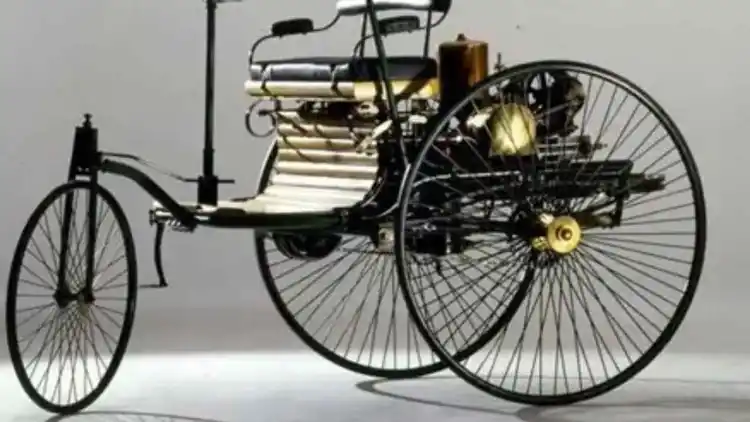- Ferruccio Lamborghini: From Fields to Fame
- The Birth of Lamborghini Trattori (Tractors)
- The Spark: A Feud that Created a Legend
- Building the Dream: Lamborhini Automobili
- Early Triumphs: The 350 GT and 400 GT
- Miura: The Game Changer
- “The Tractor That Became a Bull”
- Growth & Turmoil
- The Chrysler and Audi Eras
- Timeline of Icons
Lamborghini—synonymous today with explosive power and Italian perfection—was not born as a supercar legacy but as an act of defiance. Its roots date back to a stubborn mechanic named Ferruccio Lamborghini, a visionary industrialist who turned a feud with Enzo Ferrari into an empire of rolling thunder. This is the extraordinary story of how a man who built tractors ignited one of the most iconic names in automotive history.

Ferruccio Lamborghini: From Fields to Fame
Born: April 28, 1916, in the rural village of Renazzo near Bologna, Italy.
Early Passion: Ferruccio grew up fixing farm machinery rather than tending the crops his family cultivated.
Education & Skills: Studied mechanical engineering in Bologna, specializing in engines and precision mechanics.
War Experience: Served in the Italian Air Force during World War II as a mechanic maintaining aircraft engines—a background that sharpened his technical expertise.
After the war, central Italy was littered with broken military vehicles. Ferruccio saw an opportunity. Using leftover war parts, he began rebuilding engines and machinery—a small step that would eventually lead to greatness.

The Birth of Lamborghini Trattori (Tractors)
Established: 1948
Business Model: Converting surplus military engines and parts into agricultural tractors.
Success Story: Within a few years, Lamborghini Trattori became one of Italy’s largest agricultural machinery manufacturers, making Ferruccio a millionaire by his mid-30s.
Diversification: By the mid-1950s, he expanded into air-conditioning and heating systems, broadening his manufacturing empire.
However, Ferruccio had a passion that money alone couldn’t buy—a love for fast, finely crafted cars.

The Spark: A Feud that Created a Legend
By the late 1950s, Ferruccio owned several luxury sports cars, including a Ferrari 250 GT. But one day, after repeated clutch issues, he sought to share his solution with its creator, Enzo Ferrari. Ferrari famously dismissed him, saying, “You build tractors—leave the sports cars to me.”
For Ferruccio, that was the turning point. Out of wounded pride came inspiration: “If Ferrari won’t build the perfect car, I will.”

Building the Dream: Lamborhini Automobili
Founded: May 1963, in Sant’Agata Bolognese, Italy.
Vision: Create the ultimate grand tourer that combined beauty, comfort, and reliability—qualities Ferrari often sacrificed for racing performance.
Team: Ferruccio assembled Italy’s best technical minds:
Giotto Bizzarrini (engine development)
Gian Paolo Dallara & Paolo Stanzani (chassis design)
Franco Scaglione (body styling)
Within six months, their first prototype — the Lamborghini 350 GTV, a 3.5-liter V12 grand tourer — stunned the 1963 Turin Auto Show even though it was never fully functional.

Early Triumphs: The 350 GT and 400 GT
The following year, Lamborghini perfected the design into the 350 GT, with a 270-hp V12 engine tuned for road use.
Its combination of elegance and engineering precision pushed Lamborghini into the headlines, offering a softer yet faster alternative to Ferrari’s raw racers.
Soon, the 400 GT and 400 GT 2+2 arrived in 1966, expanding Lamborghini’s portfolio and positioning the brand squarely among luxury-performance icons.

Miura: The Game Changer
In 1966, Lamborghini shocked the world with the Miura, a mid-engine masterpiece that redefined auto design forever.
Design: Created by Marcello Gandini at Bertone, the Miura featured a sleek, aerodynamic body and a transversely mounted V12 behind the seats—a world first for road cars.
Impact: Produced between 1966 and 1973, the Miura became the blueprint for every supercar since and put Lamborghini on the world map.
It was a triumph of art and engineering wrapped in one astonishing package.
“The Tractor That Became a Bull”
When critics mocked Ferruccio, saying, “How can a tractor maker build race cars?”, he replied, “A bull may start in the field, but it reigns in the arena.” Two years later, his charging bull emblem—a nod to his zodiac sign, Taurus—was on the hood of the fastest car on Earth.
Growth & Turmoil
The late 1960s saw Lamborghini thrive, producing the Islero, Espada, and Jarama models. But the global oil crisis of 1973 and a declining luxury market hit hard. Sales plummeted.
1974: Ferruccio sold his controlling interest to Georges-Henri Rossetti and René Leimer and retired to his estate in Umbria.
1978: The company went bankrupt.
A string of owners followed before Jean-Claude and Patrick Mimran, two Swiss entrepreneurs, revived Lamborghini in 1984, launching new models like the Jalpa and the first super-SUV, LM002.

The Chrysler and Audi Eras
1987: Chrysler acquired Lamborghini and introduced the Diablo (1990), pushing the brand into the modern age.
1994: Sold to Malaysian and Indonesian investors, who managed it briefly.
1998: Lamborghini officially joined the Volkswagen Group under Audi AG, marking a new chapter of stability and innovation.
From then on, cars like the Murciélago, Gallardo, Aventador, and the hybrid Revuelto reinforced Lamborghini’s position as a global supercar icon.
Timeline of Icons

From humble farms to supercar factories, Lamborghini’s rise teaches a powerful lesson: passion and pride can outpace legacy.
Ferruccio’s mechanical genius and unyielding drive created more than cars—they created cultural icons.
Today, every Lamborghini carries the same DNA—a fusion of art, rebellion, and speed screaming in every rev: the heart of Italy, the soul of a bull.










